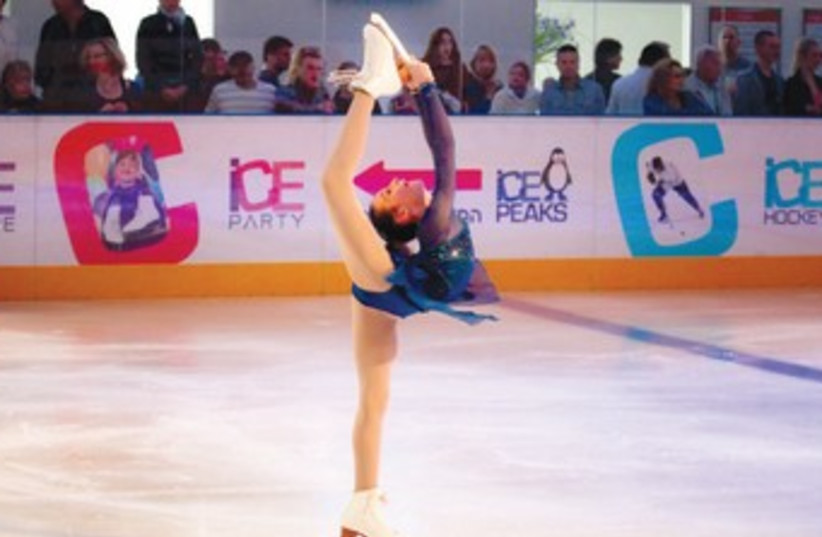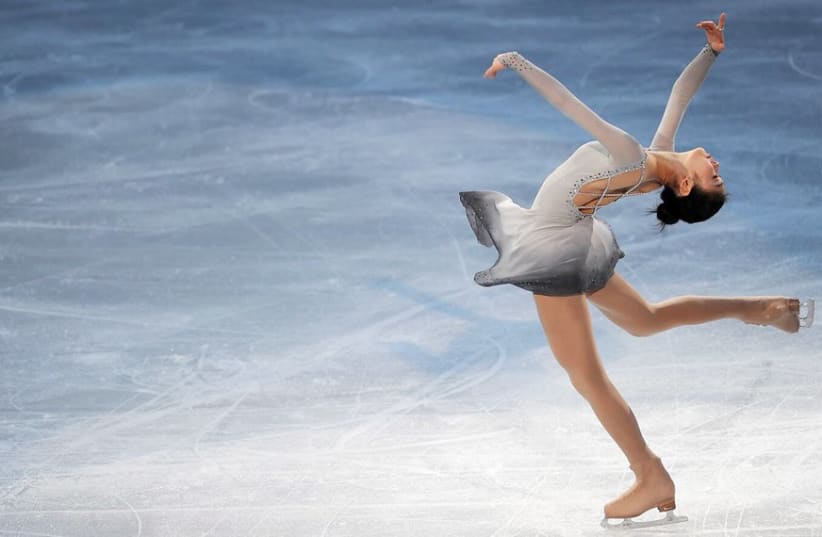We’re all familiar with the magic of the Olympic games. Once every four years, the entire family sits down together to watch a selection of sports that many of us are not routinely exposed to. As a child, I was in awe of the spectacular abilities of the athletes, and especially the figure skaters at the Winter Olympics. I just couldn’t understand how they could change the pace of their spin so quickly and elegantly. Today I know: it’s all about angular momentum conservation.
Angular momentum is a conserved physical quantity, similar to the way that energy is a conserved quantity. Roughly, it is a measure of the rotational momentum of a rotating object or body. The Law of Conservation of Angular Momentum is what allows the figure skater to control the pace of her spin, just as it prevents us from falling every time we ride a bicycle.
In order to understand angular momentum, let’s take a point around which an object rotates and calculate the radius, or the distance of the object from that middle point, and the angular velocity of the object, which is based on the number of revolutions per second. A “regular” or linear momentum, which describes motion along a straight line, is the product of the mass times the velocity of an object, characterizing the magnitude of the motion. If a car and a truck are traveling at the same speed, the truck has a larger momentum since its mass is much larger. This is also why much more energy is required in order to stop it. The angular momentum is a product of the mass times the angular velocity times the squared radius, implying that the energy of an object rotating further from the central point is larger than that of an identical object rotating at the same velocity in a smaller circle.
Another physical quantity is torque, also referred to as the rotational force, which, in its most basic form, is the product of the force times the length of the axis exerting that force. If a swing is hanging on long chains, we will need to apply more force to swing a child to a certain height, than we would on a swing hanging on shorter chains. The moment of inertia of an object describes the ratio between the rotational force and the angular acceleration of an object along a certain rotational axis. The angular momentum is equal to the moment of inertia times the angular velocity. An object with a higher moment of inertia will spin slower than would the same object with a lower moment of inertia when a similar force is applied.


Spinning While Skating
Let’s get back to the spinning figure skater. Given that no outside force is applied, the angular momentum is conserved. When the skater extends her arms or legs, she effectively increases her radius, and thus changes her moment of inertia. Since the angular momentum remains constant, what changes the angular velocity of the spin? For example, when the skater extends her arms outwards, increasing twofold the moment of inertia, the velocity of her spin also decreases twofold. While tucking her arms in, she decreases the moment of inertia significantly and thus gains high rotational velocity. One doesn’t have to be a skilled dancer to experience this phenomenon – you can try it out (carefully!) on a swivel chair or a rotating stool, in the following way.
Now that we understand the meaning of the conservation of angular momentum, we can enjoy watching figure skating competitions even more.
